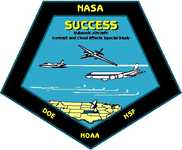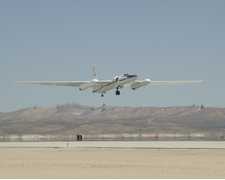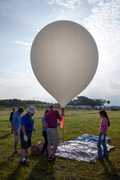
SUbsonic aircraft: Contrail & Clouds Effects Special Study
Atmospheric Composition
- 1
- view all deployment datesDeployment
1996-04-02 1996-05-15 - 6
- Platforms
- 1
- Data Products
The Campaign
The SUbsonic aircraft: Contrail and Clouds Effects Special Study (SUCCESS) was a NASA field investigation that examined how subsonic aircraft affect contrails, cirrus, clouds, and atmospheric chemistry. SUCCESS involved a single deployment during the boreal spring of 1996 across central and western regions of the United States. NASA’s ER-2, DC-8, and T-39 aircraft were equipped with remote sensing and in situ sensors to collect data on cloud properties, aerosols, contrails, and radiation. The Department of Energy (DoE) Atmospheric Radiation Measurements Program (ARM) supported ground-based measurements through the operation of the Clouds and Radiation Testbed (CART) site in northern Oklahoma and southern Kansas. SUCCESS was funded by NASA's Subsonic Assessment Program (SASS) and the Radiation Sciences Program.
N: 47°N
S: 25°N
W: 126°W
E: 88°W
no campaign DOI available
- Overview of the SUCCESS campaign
- SUCCESS Project Website (ESPO)
Additional Notes
Repositories

NASA Earth Resources-2 Aircraft
NCAR Sabreliner
Boeing 757-200

Balloon Launch Site

Permanent Land Site

Douglas DC-8
Events
Filter data products from this campaign by specific platforms, instruments, or formats.
